Beyond Mammy, Jezebel, and Sapphire: Reclaiming Images of Black Women
Who will sing a Black girl’s song?
During the spring 2015 semester, a group of students at Colorado College, where I am Associate Director and Assistant Professor of Feminist & Gender Studies, approached a number of faculty and staff to help them plan several on-campus actions in support of #BlackWomenMatter. Their efforts resulted in a #BlackWomenMatter special edition of The Monthly Rag (a student-run, feminist newsletter) published on April 29, a protest following Honors Convocation and conversation with Dr. Takiyah Nur Amin (for Black women students, staff, and faculty) on May 5, and a Teach-In that I led on May 7, among other events. One year later, I learned that Jessica Hunter Larsen, Colorado College alumna (’90) and Curator of the Interdisciplinary Experimental Arts (I.D.E.A.) Space in the Cornerstone Arts Center, had been watching the protests intently and listening carefully to their messages. Subsequently, she had the idea to secure “Beyond Mammy, Jezebel, & Sapphire: Reclaiming Images of Black Women” from the Jordan Schnitzer Family Foundation for exhibition at Colorado College from March 27 until May 10, 2017. The exhibit will also be showcased at the Alexandria Museum of Art from December 2, 2016 to February 18, 2017. Given my intellectual commitments to Black feminism and womanism, Jessica asked me to write an introduction to the exhibit catalog (published at length here) inviting audiences to engage the exhibit through those frameworks.
**********
“A good job has been done in this country, as far as convincing [Black women] of their inferiority is concerned. The general white community has told us in a million different ways and in no uncertain terms that ‘God’ and ‘nature’ made a mistake when it came to fashioning us and ours.”
—Abbey Lincoln, “Who Will Revere the Black Woman?” (1966)
“No other creative field is as closed to those who are not white and male as is the visual arts. After I decided to be an artist, the first thing that I had to believe was that I, a black woman, could penetrate the art scene, and that, further, I could do so without sacrificing one iota of my blackness or my femaleness or my humanity.”
—Faith Ringgold, Ms. Magazine Interview (1973)
Bantu knots, sew-in weaves, Egyptian cuts, baldies, perms, Afros, bald fades, plaits.
Unfortunately, only an exhibit that centers Black women as artists and subjects of artistic expression would typically invite audiences to see and appreciate all of these hairstyles and the Black women who wear them in this kind of artistic space. And while hair is but one way in which Black womanhood is defined and expressed, and sometimes overdetermined both within and outside Black communities, it is through this particular aesthetic vehicle that I invite audiences—albeit briefly—to understand and appreciate “Beyond Mammy, Jezebel, and Sapphire: Reclaiming Images of Black Women,” as well as the Black women it honors, by employing a deliberately Black feminist and womanist lens. I make this case, because for nearly 250 years (long before the terms feminism and womanism were created), these frameworks—named and developed by key Black women intellectuals like Toni Cade Bambara, Audre Lorde, Alice Walker, and Layli Maparyan, to name a few—have implored us to seriously consider and address the ways in which racism, sexism, heterosexism, and other forms of visible and invisible, explicit and dysconscious oppression interconnect and shape the experiences of Black people, especially Black women.
I became acutely aware of the saliency of even the most so-called micro-level forms of oppression leveled at Black women not long before I turned 5-years-old and started kindergarten at North Lincoln Elementary School in Alliance, Ohio. For the occasion, especially momentous since I was permitted to quit preschool after one day and never went to daycare, my mother dressed me in a supremely frilly, but very pretty, yellow or pink first-day-of-school dress with complementary white, patent leather shoes and a white bow clipped to my hair. Being that it was 1986, it would likely surprise no Black person living in the U.S. that my hair was styled in a Jheri Curl, created by entrepreneur Comer Cottrell and named for hairstylist, chemist, and entrepreneur William “Jheri” Redding. The Jheri Curl—popularized throughout the 1970s and 80s by Black entertainers, such as Rick James, Debbie Allen, Michael Jackson, Evelyn “Champagne” King, Eazy-E, and Ola Ray—was hailed as a “wash and wear” style much easier to manage than natural Black hair or other chemical straightening treatments like the “relaxer.” The Jheri Curl gave its wearers glossy curls—tight or loose, depending on the size of the chosen curling rods—that would shine after the user applied the appropriate amount of curl “activator.” On my first day of school, my curls were shining brightly, so my hair was super greasy, which posed a bit of a problem for the Big Bird poster I leaned on as I waited to enter my classroom. As a result, two white boys standing behind me found this an appropriate occasion for bullying. They snickered. They laughed. They whispered. They pointed. And I was mortified. Up until that point, my family and community taught me to know myself as a curious, smart, beautiful, funny, and loved little Black girl. At that moment, those boys taught me that I was one thing and one thing only: ugly.
“Beyond Mammy, Jezebel, and Sapphire,” then, should inspire audiences to think critically about these and the many other dangerous assumptions about Black women in ways that are far more complex than discourses outside of Black feminism and womanism typically allow. A large part of that work entails listening intently to the ways Black women, including the artists featured here, think about and discuss ourselves on our own terms, which is critical, because as the late Black, lesbian, mother, warrior, poet Audre Lorde reminds us on behalf of all Black women, “If I did not define myself for myself, I would be crunched into other people’s fantasies for me and eaten alive.” It is important, then, for us to spend some time here—and hopefully more time as we continue to engage the exhibit—hearing some of these Black women artists speak for themselves. Along these lines, Kara Walker tells us, “Challenging and highlighting abusive power dynamics in our culture is my goal; replicating them is not.” Wangechi Mutu notes, “A lot of my work reflects the incredible influence that America has had on contemporary African culture. Some of it’s insidious, some of it’s innocuous, some of it’s invisible.” And Alison Saar claims, “The balance of the work has been political, but coming from very much my own personal experience and personal point of view as a woman, as a mother, as an African American.” Hence, to fully appreciate Walker, one must be intensely aware of the “abusive power dynamics in our culture” that she is working to resist. In order to appreciate Mutu, one must be aware of and pay careful attention to the “incredible influence” America has had on African culture. To better understand the significance of Saar, one must acknowledge the historical and contemporary social, cultural, and political contexts that inform her experiences as woman, mother, and African American. And of course, these abusive power dynamics, influences, and contexts undoubtedly include the Mammy, Jezebel, Sapphire, StrongBlackWoman, Welfare Queen, Hoochie, Bitch, Ho, Side Chick, Chickenhead, and other disparaging caricatures of Black women no matter how complimentary they may seem or how the names vary depending on geographical location, time period, and other determinants.
Thirty years later, we have strong evidence that Black women and girls are still aesthetically subjugated, especially concerning their various hairstyles. For example, in September 2013, Tiana Parker, a then 7-year-old girl in Tulsa, Oklahoma, was sent home from her Black-led charter school because, according to school policy, her dreadlocks were “unacceptable.” This past May, Marian Reed’s 9-year-old daughter was called into the office at Tarver Elementary School in Temple, Texas, because the Assistant Principal claimed her natural hair looked like a “faux hawk,” which violates school dress code. This problem is not unique to Black girls in the U.S., however, as this past February, a group of Black girls were suspended from the C.R. Walker Senior High School in Nassau, Bahamas, because their natural hair was deemed “untidy, ungroomed, and unkempt.” Similarly, in 2015, the mother of a thirteen-year-old student in Toronto, Canada was told by Principal Tracey Barnes, a Black woman, that her daughter’s hair was “too poofy” and “unprofessional.” Sadly, this subjugation likely will not cease when these girls become women. We know this because of Jessica Sims, Farryn Johnson, Rhonda Lee, Ashley Davis, and the scores of other Black women who were shamed—as I was at 4-years-old—and materially affected by the assumption that their bodies, especially their hair, “threaten the social, political, and economic fabric of American life,” as Paulette M. Caldwell points out.
The two little boys at my elementary school were reared in a culture in which these caricatures and their implications continue to have a significant impact on Black women—within and outside Black communities—and in which understanding Black womanhood and caring deeply about Black women continues to have little to no importance. The same is true for the aforementioned school officials and employers who decided that the myriad ways Black women and girls express themselves aesthetically through their hair was not worth knowing and understanding, let alone appreciating. We know this to be true if we listen carefully to and believe the Black women who are pleading with us to #SayHerName and who scream #BlackWomenMatter and #BlackGirlsRock. It is my hope, then, that audiences engaging this exhibit will take a moment to take part in this listening, this believing by singing a Black girl’s song, by sharing in a counternarrative that does know, understand, and appreciate the complexity of Black women’s pain, Black women’s joy, Black women’s trauma, Black women’s healing, Black women’s tears, Black women’s laughs, Black women’s souls, Black women’s spirits, Black women’s minds, Black women’s emotions, Black women’s intellect, Black women’s skin, Black women’s shape, Black women’s hair. As Toni Morrison writes in The Bluest Eye (1970), “Guileless and without vanity, we were still in love with ourselves then. We felt comfortable in our own skins, enjoyed the news that our senses released to us, admired our dirt, cultivated our scars, and could not comprehend this unworthiness.” The artists featured in “Beyond Mammy, Jezebel, and Sapphire” are attempting to create a space in which Black women can remain forever in love with ourselves and comfortable in our own skins, inspired by our dirt and scars and uninhibited by tales of our unworthiness.
Heidi R. Lewis is an Assistant Professor of Feminist & Gender Studies at Colorado College and an Associate Editor for The Feminist Wire whose work primarily focuses on Feminist Theory, Critical Race Theory, and Critical Media Studies. Her work has been published in The Cultural Impact of Kanye West and the Journal of Popular Culture. She is also the author of forthcoming essays that examine FX’s The Shield, constructions of white police officers on TV dramas, VH1’s Love & Hip Hop franchise, and Bravo’s Married to Medicine. She has given talks at Kim Bevill‘s Gender and the Brain Conference, the Educating Children of Color Summit, the Motherhood Initiative for Research and Community Involvement, the Gender and Media Spring Convocation at Ohio University, and the Conference for Pre-Tenure Women at Purdue University, where she earned a Ph.D. in American Studies (2011) and a minor in Women’s, Gender, & Sexuality Studies (2008). She has also been a contributor to Mark Anthony Neal’s NewBlackMan, NPR’s “Here and Now,” KOAA news in Colorado Springs, KRCC radio (the Southeastern Colorado NPR affiliate), Bitch Media, Racialicious, and Act Out. Heidi and her husband, Antonio, live in Colorado Springs with their two children, AJ and Chase, their cat Max, and their dog Philly. Learn more by following Heidi on Twitter at @therealphdmommy and by visiting her FemGeniuses website.

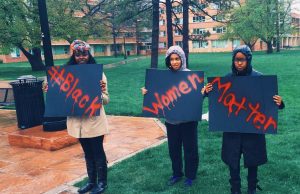
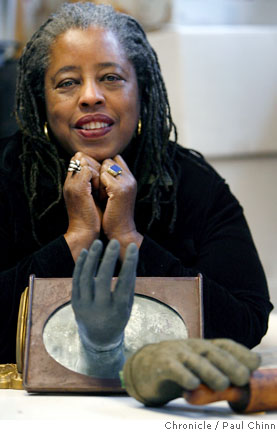
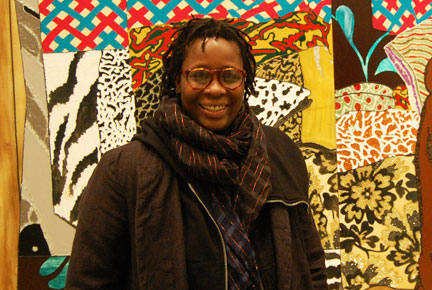
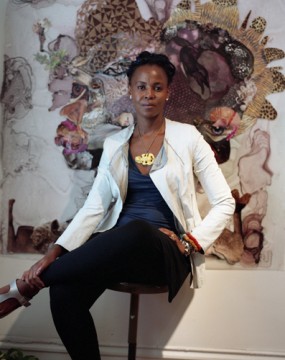
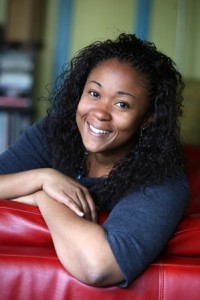
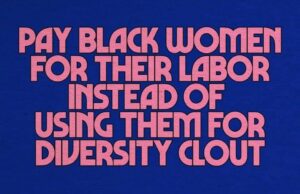
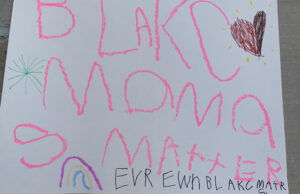

2 Comments